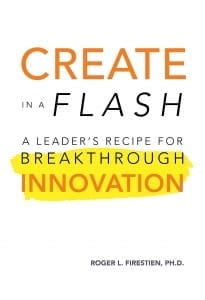What is a Revenue Cycle Management Company? Everything to Know
Have you ever wondered how health care providers manage their finances?
Or perhaps, you run one and are looking for an effective solution to the complicated system of revenue management.
Whichever you are, you probably know that health care providers are constantly chided for their high-cost services towards patient treatment. But as noble and unprofitable as some might expect these services to be, the truth is, hospitals and clinics are unable to function efficiently without maintaining a healthy financial system.
And so, in order to keep things productive, they incorporate a system of revenue cycle management (or, RCM).
So, what is RCM and what purpose does it serve?
Let’s find out.
Revenue Cycle Management: A Definition
It is a process through which health care providers are able to track a patient’s payments or revenue cycles from their initial appointments, right up to their final payment.
To do this, a hospital may employ a revenue cycle management company that has expertise in practicing this very process. These companies generally follow very specific steps to track a patient’s payments before their initial visit, during their visit, and after their visit.
So, what does an RCM company’s process look like?
The Pre-Visit Process
Beginning a patient’s revenue tracking before their initial visit might seem redundant, but it is actually very essential. It is where the whole process begins, and only with pre-visit tracking can there be a wholesome analysis at the end.
This part of the process mainly involves:
- Demographic Verification: For new patients, it involves getting accurate details about their current address. In the case of old or returning patients, it involves verifying their current whereabouts and documenting any changes in residence since the last visit.
- Eligibility Check: This involves verifying whether the patient is eligible for insurance.
These initial communications help set the stage for a fruitful RCM process.
What Comes Next?
After the pre-visit formalities are complete, the companies have to obtain documentation from the health care provider. This is done to check whether the insurance companies are liable to fulfill the payment. This process looks something like this:
Obtaining and Verifying Clinical Documentation
During a patient’s treatment (or after the treatment), their clinical documents must be recorded and submitted. In order to be eligible for insurance payment, it must comply with the ICD-10 standards.
Once the documentation is analyzed, it will be determined what portion of treatment is payable by the insurance company, and what must be billed directly by the patient.
The Superbill Payment
This is the most important step in the medical billing process. After the verification is complete, the superbill must be paid off. The company ensures that the payment is completed and paid to the respective physician or health care provider.
Collection of Payments
The remainder of the patient’s payment is collected from the patient. It is now common practice to ask the patient to complete payment during registration itself.
Post-Visit Practices
Now, after payments are issued there are still some things that need taking care of. Claims need to be processed, seen through, and recorded.
Follow-Ups and Additional Claims
This is done when insurance companies fail to comply with all the specified payments. RCM companies will get in touch (via phone calls, emails, etc.) to remind and ensure that these payments are made. Inquiries will be made into failure to pay and investigated if necessary.
Verification of Receipts
Once the payments are complete, receipts must be verified to ensure that all parties have complied with their payments. This ensures that the process has been true to its purpose of collecting and remitting payments to the appropriate parties.
Data Analysis
Finally, to complete the process, all data will be compiled and analyzed to derive meaningful insights. These insights will then be used to understand how to make the system more efficient, effective and quicker.
This step is crucial to maintaining a stable financial system for health care providers, while allowing them more information relating to elements like performance, cost, etc.
Utilization Review
While examining data, the necessity of the medical services will also be reviewed. This enables a service vs cost analysis.
Why Do Providers Outsource RCM or Medical Billing?
So you might now wonder, why providers choose to outsource this process to a company. The truth is, it can be a complicated, time-consuming process that often requires external expertise. Some other perks include:
Improved Patient Care
It allows hospitals and clinics to do what they do best without the added hassle of revenue management. The exclusive focus on patient care makes for a more efficient system.
Less Room for Error
Since the whole process often calls for a different, more financial form of expertise, it lowers the chances of billing errors. A third-party company can often add fresh perspectives to analytics and insights that an insider might sometimes miss.
Cost-Effective
Whether it’s with regard to RCM technology or the cost of setting up an in-house system, a company is likely to be far more cost-effective in the long run. Also, the lower risk of errors is also a contributing factor to better finances.
Challenges Along the Way
The revenue cycle management process is not without its challenges. The intricate system of billing management, maintaining accurate charge descriptions and complying with coding requirements are very real issues that RCM companies face.
Even claim compliance can often be time-consuming and tedious when dealing with difficult insurance companies or patients. However, with the right company and the right technologies, your medical systems can take a step in the right direction.
Like this article? Check out our ‘insights’ category for more valuable perspectives on all things business.






 The concept and aspiration for fully autonomous vehicles has been around for at least 40 years. The reality in 2019 depends on who you talk to; it’s either here today, a few years away, or a decade or more before they truly become mainstream.
The concept and aspiration for fully autonomous vehicles has been around for at least 40 years. The reality in 2019 depends on who you talk to; it’s either here today, a few years away, or a decade or more before they truly become mainstream.